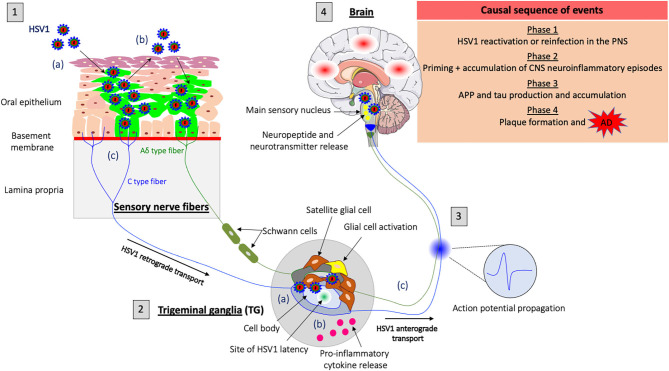Figure 1.
Model of HSV1-induced neuroinflammation in the PNS as a trigger for Alzheimer's disease (AD). (1) HSV1 first replicates in the oral mucosa epithelial cells; (a) HSV1 infection; (b) Viral spread within the mucosal epithelium and viral shedding; (c) HSV1 enters nerve endings of the PNS, including those coming from the trigeminal ganglia (TG) and spreads in the retrograde direction in axons to the ganglia. (2) HSV1 initiates a productive infection in TG neurons; (a) HSV1 replicates in cell bodies of TG neurons; (b) HSV1 induces a neuroinflammatory response (e.g., proinflammatory cytokine release and glial cell activation) in the PNS following primary infection or reactivation from latency; (c) New progeny virions can further spread in the anterograde direction and infect the CNS. (3) Synaptic transmission of the inflammatory response accompanied by the release of neuropeptides, neurotransmitters and the propagation of specific action potentials from the TG to the main sensory nucleus located in the brainstem. (4) Priming of the brain to a similar inflammatory state following transduction of inflammatory stimuli from the PNS. HSV1 reactivation or new primary infection of the PNS will thus enhance inflammatory responses in the brain. These events are likely to trigger the production of APP and tau proteins in the brain and repeated inflammation will lead to the accumulation of these proteins and the development of Aβ plaques that cause AD.

